- south Aucklanders to turn out to vote in record numbers;
- the Green Party onside and returning a party vote result above 12 percent;
- swing voters to give it the nod in the provinces.
PART ONE OF THREE: In this, the first of a three-part weekly feature, The Daily Blog looks at why south Auckland’s vote must not be taken for granted; how National has been working a strategy designed to erode Labour’s support-base; and what Labour must do to become relevant to those currently estranged from political representation.
MENU:
Introduction |
Ch 1: Like All Others Before It: |
Ch 2: When Compelled To Vote: |
Ch 3: National’s Vice Strategy – The People: |
Ch 4: National’s Grand South Auckland Plan: |
Ch 5: National’s Tactics There For All To See: |
Ch 6: National Needs A Dose of Its Own Medicine: |
Ch 7: In Conclusion: |
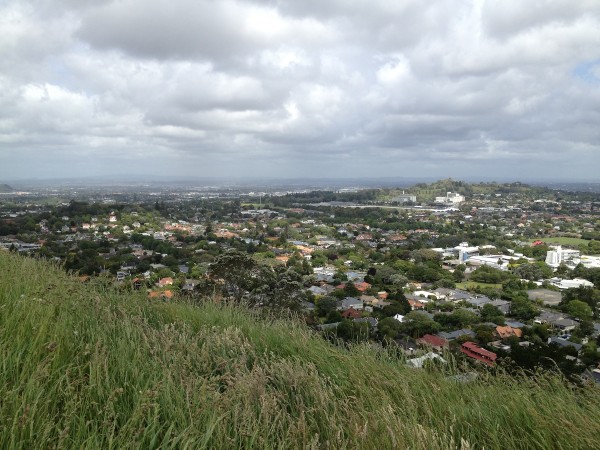
INTRODUCTION:
FOR AS LONG as south Auckland has been a place where working class families live, a place where working class values thrive, Labour has been the party of choice for the majority of those who turn out to vote. That’s a given. But what is variable is the proportion of eligible voters who turn out to vote.
That fact alone has caused the region to become a political battlefield where National’s strategising threatens to destroy the historical symbiotic relationship between centre-left political representation and the good people of the Great South Auckland Basin.
The purpose of this piece is to signal to Labour the need for it to reconnect to those who have become estranged from political representation.
Like all others before it, next year’s general election will see the nation’s peoples glued to their collective televisions watching the early poll results coming in.
And as they do so, they will see the TV results turning blue. The first two hours of election night will see National surging ahead.
There’s nothing new to this, but for both those aching for a change of government, and, for the others who long for third-term National Party rule, it will be a nervy experience.
Rural and provincial polling booths are traditionally the first to return their tally. These are the booths representing National’s rural rump and died-in-the-wool blue provincial-urban loyalists.
To the casual observer, the early election results (from 7-9pm) will suggest National advancing onward to a landslide victory. But National Party stalwarts will know that to win the 2014 election they will need to build on 2011’s record-breaking result and create an unprecedented third-term swing.
As we all know, for National to achieve glory, its leader John Key will have to produce a blinder of a campaign. Quietly, National Party strategists say, even considering Key’s magic, with Labour’s new leader David Cunliffe at the opposition’s helm, it will be a close fought battle.
No one, certainly Labour, appears to be taking anything for granted.
As election night churns on, thousands upon thousands of south Auckland voters will begin to sit upright in their chairs – as they have done for generations.
Joined by the nation’s Labour and Green supporters, they will wait with anticipation and wonder if the peoples of the Great South Auckland Basin have mobilised in numbers so large as to turn the TV screens red – as they have done in previous generations.
Everyone knows, that when given a reason to; when driven by a mood of change; offered political leadership worth voting for, and policies that connect – policies that will make a difference to them, their children, their parents, their community – a mobilisation takes place all across this region where centre-left voters honour their opportunity to deliver a change in government.
It’s a covenant of sorts: If Labour positions itself well, offers people solutions, hope, respect, an egalitarian promise made by a leader, backed by policy so as to be believed, the Party and its candidates will be rewarded, as they have been rewarded in previous generations.
One gets a sense that Labour is on message, that after some years, it is back walking the south Auckland talk.
But if Labour fails to be a Government in waiting, fails to pull behind it a trailer-load of solution-based policies designed to deliver opportunity to this country’s 800,000, the politically estranged, then south Auckland’s people too will stay home, shut their doors, and leave the politicians to it. With eyes downcast they will harden themselves again against the failed ideologies that cause their children to cry and their parents to feel shame. Some… will wait for their powder to dry.
Whether you are red, white, brown, yellow, green or blue, south Auckland is both a terrific ally and a formidable foe. It is, as the old Manukau City Council motif suggested, ‘The Face of the Future’. You ignore this place to your peril.
In the past, National had zero ability to affect voter behavior inside this Great South Auckland Basin. But today, and in 2014, that has changed.
When Compelled To Vote:
When south Aucklanders mobilise, a sea of red urban working class votes surges like a political King tide over New Zealand’s provincial blue.
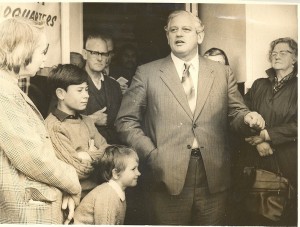
Back then the same could be said for almost all of south Auckland’s peoples. Here our friends lived in houses mostly built by the state, some owned their houses and some paid rent. These were hard working families where the mother raised the kids, did some part-time work, and the fathers went out to full-time work. Each morning thousands boarded trains that made their way northward. The men disembarked at the railway workshops near Otahuhu, and others got off at the freezing works stations of Hellabies, Westfield, and Southdown. Every afternoon the tide of human labour returned home. It was the southern oscillation, it was the pulse of the population, and the beat was strong.
We all know the story. Kirk died too early. My grandfather and I sat watching the funeral on TV. Perhaps that’s why I remember it in black and white. He told me all about Kirk, and of Mickey Savage. He said, Savage brought in a rule where one man did one job. He said it didn’t mean a man got to work all day every day, but more people got a chance to work.
I remember him saying the new Prime Minister would be Bill Rowling or Bob Tizard. He preferred Rowling but didn’t think he could ever step up out of Kirk’s shadow, even in death.
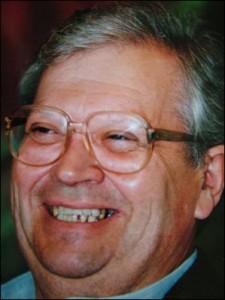
South Auckland delivered. Its peoples delivered again in 1987, even though they were hurting. We would all have gone to the wall for David Lange back then. Many of us still would if given a chance. After all, he was one of us, not a turncoat like Douglas.
By 1990, we had all had a gut’s full. South Aucklanders stayed home on polling day.
But in 1999 we all voted. They sure did.
By 2008, we had all had a gut’s full.
And now it’s nearing the eve of election year 2014. The cycle is tighter. And south Auckland is listening, thinking, testing, waiting.
But times have changed. The region is no longer what it was. People have long gone, people have died, people have moved on, and the collective sense of knowing who we are or have become is blurred.
Like others, south Aucklanders now see politics in multilayered terms. The old left-right arguments mean squat, and the old cultural connections to Labour or National are more fluid. It’s a marketplace out there, where most know what party will help butter the bread, but it is a case of whether the bread is able to be baked.
National knows this and is milking it.
National’s Vice Strategy – The People:
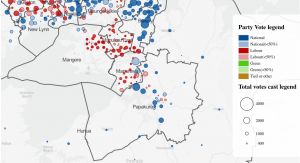
But that opportunity was not realised by Labour, and then a National Party political hopeful, Judith Collins, seized her chance, ran as a candidate, and has since solidified her hold on the seat, expanded it, controlled it, and the Party’s reach into the south of Auckland region.
Collins is largely the enforcer of National’s political machine in south and east Auckland. She is both the powerhouse and benefactor of National’s vice strategy here.
A few years ago Collins attracted to her Daniel Newman, a former Labour Party member, Manukau City councillor, community board chair, leader and key strategist of the now dominant economically rightwing ACTion ticket.
Under Newman’s control, ACTion’s local government politicians have swept across Manurewa, Papakura and Franklin winning a solid majority over centre-left teams and delivering community board dominance and ACTion team councillors to the Auckland Supercity.
It is testament to Newman’s cunning and inside knowledge that his rightwing local government machine has been able to become the ticket of choice for south south Auckland voters.
His influence and focus is now on Central Government.
National’s Grand South Auckland Plan
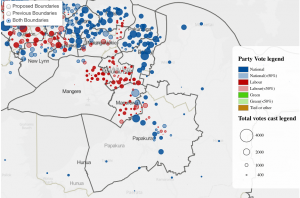
From the outside Manurewa may appear a bastion of centre-left politics.
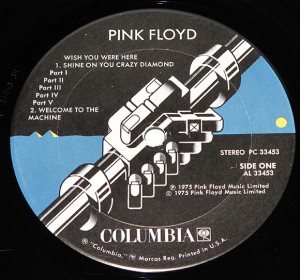
But all of that’s insignificant by today’s standards.
This weekend, during an interlude from writing this feature, I was down in the south. Driving along Great South Road the humm was silenced. A Police car, with siren blaring, flew passed, hurtled onto the opposite side of the road, overtook a couple of cars at highway speed, cut back into the traffic and sliced left into Mahia Road. A couple of minutes later on passing Boon Street, three cop cars and four or five officers had encircled a young Polynesian youth. He was on his knees. Hands cuffed behind his back. One of the officers was pointing something black to his head. On first glance it looked like a gun! But no, it was one of those things the Police use to test alcohol levels. I don’t know what his alleged crime was, but it was a reminder of how this place lives on a knife’s edge where the rapid response actions of the cops are as terrifying as the violence they are commissioned to arrest.
These are just snapshots, nothing more, nothing less, actions of what occurs everywhere, every day.
Whatever, never mind. Yes, no. Manurewa is hard. Does this mean it is politically loyal-left?
This is the place where Roger Douglas grew up. He coached soccer here while his brother Malcolm was our coach at the Manurewa Marlins Rugby League Club. The latter was a good coach and a good man too. Manurewa is where National’s Merv Wellington once reigned from 1975-78. And Manurewa is where Mr Rogernomics acquired huge support among the local LEC members and was the MP here from 1978-90. George Hawkins (a member of Labour’s right-leaning ‘backbone club’) took over from Douglas from 1990-2011 and as an MP pulled in huge majorities election year after election year. George was a good man too and in my view the most shrewd politician to have graced the south of the south Auckland electorates.
National knows all of this. Does Labour? Or has it forgotten.
For the past nine years, National’s key tactic has been to draw into the Tory fold conservative-leaning Labour members – those who have found themselves and their political ambitions estranged from the party. Among them, the lucky turncoats have been promised influence, respect, and for one political elite, a shot at a candidacy in a safe National Party seat just south of here.
These former Labour members are blue-chip acquisitions for National, and National is darn lucky to have them. They know intimately Labour’s strengths, and more importantly, Labour’s weaknesses. Once turned, the information they provide National empowers the centre-right to exploit the weaknesses of the centre-left’s territorial hold, dilute its influence and slowly, stealthily, arrest Labour’s ability to achieve its potential vote.
I’m not suggesting Labour could lose Manurewa, Manukau East or Mangere, but rather that National’s strategy has been to divide the seats, dog-whistle up a message that Labour’s Louisa Wall is hopeless at Manurewa electorate representation, leverage up the proportion of party vote National across the region, and provide representation in these safe Labour seats throughout the Parliamentary term.
That is something Labour has not done in seats like Papakura, a seat which contains large pockets of low socio-economically defined communities whose peoples struggle against the impact caused by this Government’s policies. These thousands of people, in just the Papakura electorate alone, find themselves glued to the perpetual indignity of being politically represented by one of the very architects of a system that accentuates their estrangement, completes their alienation, from the political process and ultimately from progress itself.
Let’s not forget identity politics, but people, out here the struggle is class, alienation, racism, and access to jobs that provide shelter and food.
National’s Tactics There For All To See.
The Vice Strategy (as I’ll refer to it as) is being applied most significantly to the great south Auckland basin electorates.
- Compress the borders of safe Labour electorates.
- Create boundary changes that eat into the National-leaning sectors of safe Labour seats.
- Place National Party candidates inside safe Labour seats who know they will lose but have National Party support via a list ranking high enough to maintain a Parliamentary career.
- Intensify influence across safe Labour seat boundaries through establishing and developing a loud and challenging network of local Government politicians.
Tactics Used To Achieve Relevance Inside Safe Labour Seats:
- Embed National list MPs through candidacies into safe Labour seats, and maintain their presence throughout Parliamentary terms – this demonstrates a commitment to the area and ensures the list MPs become the Party’s eyes and ear inside Labour’s safe seats.
- Maintain strong National Party brand inside safe Labour seats by locating Party List MP offices in National-leaning sectors of the electorate so as to demonstrate commitment to the area and provide Parliamentary Service paid electorate staff to represent and advocate for voters who did not vote Labour.
- Use those list MPs, their staff, and branch committees and members to identify political, cultural, and economic shifts within the electorates and network with ‘power elites’ in the Labour seats.
The strategy has been used to foster a demographic that spreads deep into south Auckland electorates. For over nine years now National has been reaching into suburbs on the periphery of safe Labour seats, sectors of suburbs that have been on the rise (socio-economically).
In south Auckland you can see the evidence of this when viewing how Labour’s strong safe seats, Manurewa, Manukau East, Mangere have been condensed and squeezed from the north, south and east – pressed against the Manukau Harbour.
From inside the electorates, National’s candidates work their influence. They include Cam Calder in Manurewa, Kanwaljit Singh Bakshi in Manukau East, and more recently Claudette Huaiti in Mangere.
From outside the electorates, National’s incumbents build their majorities and reach further into Labour’s turf and continue to connect with like-minded groups.
For example; with National now firmly in residence in Maungakiekie, its incumbent Sam Lotu Inga connects to the ‘Pacific Blue’ constituencies deep inside Mangere and Manukau East. Meanwhile Huaiti works the Maori communities inside Mangere and advances her rhetoric of how Maori have been abandoned by Labour. National in Maungakiekie has given up on holding onto the strong Labour Otahuhu sectors that once were part of the seat when Labour’s Mark Gosche held the seat. Today, Maungakiekie reaches further into Onehunga and its networks work their charm to gain Party vote support in Mangere Bridge.
Manukau East sits strong, but the shame of this electorate is that its representative has been missing for the best part of 13 of his 30 year reign. As a south Auckland politician Ross Robertson failed to fire, he never made Cabinet, and really has been a lame representative of this electorate’s peoples. He of course will see it differently. But for a man who committed himself so honourably to parliamentary politics over electorate representation, he should have done the honourable thing… accepted MMP is our system, stood on the Party’s list, and made way for a candidate that is hungry to make a difference and determined to truly represent his or her peoples.
Manukau East’s Ross Robertson is currently double-dipping, having won a local government role at community board level, he insists on staying on as an MP too until the 2014 General Election.
Meanwhile, chipping away on the outskirts of this electorate is National’s Jami-Lee Ross. His Botany electorate has chewed off sectors of Otara/East Tamaki, Clover Park and Flat Bush. Small bites, but over time is altering the demographics of the seat.
Over the past decade Manurewa, the ruby in Labour’s south Auckland crown, has lost significant territory to Judith Collins’ expanding Papakura electorate. The most recent electoral boundary changes have cemented in the invasion, especially on the seat’s south and south-east flanks.
On this border, Judith Collins has acquired the polling booths inside WattleDowns, The Gardens, and a large chunk of Hunua’s north-east blue-belt.
Manurewa and Papakura are significant to National’s plan, so let’s go deep.
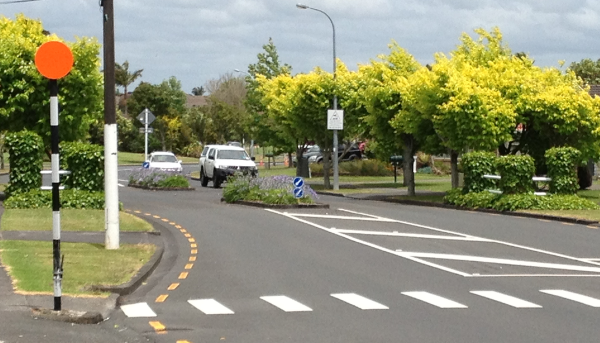
To get to WattleDowns, Collins has to drive through the urban-heartland of Manurewa’s Mahia and Coxhead roads. The people here assert to a dignity that is possibly lost on National. These people face daily an estrangement with government and if they scent opportunity they do so by their own talents. Despite the negative economic consequences delivered by National’s wealth-for-the-rich policies, the people who live along the route taken by Collins measure their successes in the short term and some can see the rewards of their efforts.
But compared to those who live at Collins’ destination, Mahia’s people are money-poor.
If you ever wondered whether the centre-right’s trickle-down economic theory works, take a drive to Manurewa’s Great South Road, turn into Mahia Road, travel up the rise and note how things begin to feel for you. Turn left into Coxhead Road, pull over for a time and slowly absorb the realness of the people’s struggle.
Not far from here is James Cook High School – just up the road – when I attended school there many of my friends lived around Mahia. Nothing has changed since then really; except more families back then maybe aspired to home ownership, could afford to paint their fences, fix their cars, clothe their kids, feed their kids, weren’t forced to down-cast their eyes when the area’s youth gangsters and peddlers mooched passed. When you visited a friend, back then you would be offered a Huntley and Palmers cracker (albeit without butter or spread) and a cup of tea. Such things are nostalgic these days – thanks to the trickle down theory. Don’t get me wrong, these are good people here, it’s the economics that is septic.
Just a few hundred metres ahead, still on Coxhead Road, is where Judith Collins drives to enter her Papakura electorate alcove of WattleDowns. You wont miss it. It’s New Zealand’s version of crossing Checkpoint Charlie – where a clash of ideologies contrasts in a way reminiscent of walking from old East Berlin and into the west. Only here, the wall, the open-gated entranceway with CCTV sign and warnings, was erected by the alcove’s wealthy. Was it a signal to Manurewa’s poor to keep out? In the space of ten metres the challenge of low socio-economic subsistence gives way to affluence, golf courses, beautifully groomed beach reserves, palatial estates and security alarms.
What exactly is the message here? If you vote Party Vote National you too can have all of this? Or is it merely a grim reminder of economic and political control – a wealth depository in the heart of Manurewa that demonstrates how contained and contrasting south Auckland has become? Good for the established, the rich, the connected to others with affluence? Bad for everyone else? Or is it merely a sector where those who have made it, cluster in numbers where they feel safe?
Whatever, it is a prized jewel in Judith Collins’ crown.
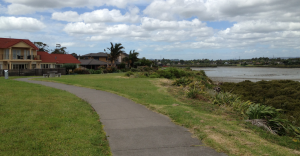
National Needs A Dose of its own medicine.
Those who find themselves estranged from political representation live in large numbers inside Judith Collins’ Papakura electorate. It’s an electorate screaming out for solid, persuasive centre-left candidacy. The politically estranged who live here in their thousands come from Manurewa’s Randwick Park, Takanini, Ardmore, Papakura East and many find it hard to be convinced voting is worth their while.
You wont find Judith Collins knocking on doors in these parts.
There are great things happening here though.
In 2002, at the height of Labour’s reach in south Auckland, the Clark-led Government committed over $23 million to establish the first state-owned secondary school to be build in south Auckland for almost three decades. Alfriston College (located in the Randwick Park area) was the first of the 21st Century ICT secondary schools, and remains a proud icon connecting the Manurewa East, Alfriston, The Gardens, Randwick Park and Takanini communities. (Disclaimer: I was appointed to the establishment board of this project and was also chair of the board leading up to the official opening.)
But since National regained power in 2008, no significant government social or economic infrastructure, or regionalised economic development, has been injected into south Auckland. And for many, Labour’s relevancy, while it has been in opposition, has receded to the safety of its three major electorates (Manurewa, Manukau East, Mangere). One gets the feeling however that now is the time for Labour to extend its commitment to Papakura’s non-National voting population – people in dire need of political representation from the inside.
The social ills in evidence in Takanini, Randwick Park, pockets of Conifer Grove, and Papakura East require solutions that Judith Collins’ National Party is neither loathed or bothered to commit to. These people require policies that facilitate regionalised economic development that will deliver jobs, livelihood, facilitate progressive communities.
Let’s do a comparison.
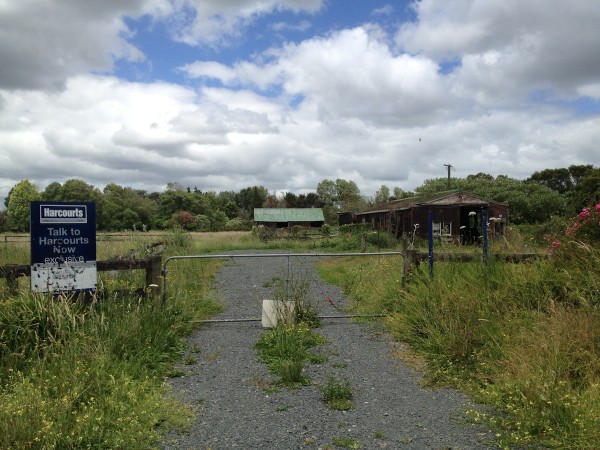
Where Takanini’s Thoroughbred racehorse industry once employed many, now stand hectares upon hectares of land-banked holdings. There’s evidence that heavy industry is coming, but the thinking that’s gone into where to locate it (on the rich fertile productive soft-peat-soil of Takanini) is tragic.
The land that’s zoned high density residential is expansive. In time, politically, a new electorate will be born here, and it’s a safe bet due to the politics of the constructed social-class the people will vote centre-left – as compared to other sub-suburbs of Papakura’s like Karaka which is constructed to attract affluence.
But for today, on this prime horticulture land that once provided the energy that hurtled racehorses such as Sunline, Bonecrusher, Uncle Remus down the track, now grows gorse, wooly nightshade, ragwort. The only thing that grows well here (apart from weeds) is the book value on the accounts of offshore and domestic land-investors.
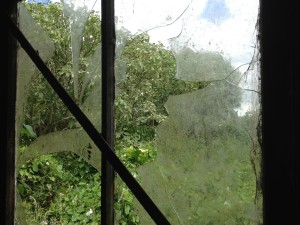
Some years ago you may have heard National Party people talking about police and community security. Policy were banded about, ideas with labels like broken windows and zero tolerance. Well where are these people now? What does Judith Collins think of the message these derelict buildings suggest to Takanini’s massive youth challenge?
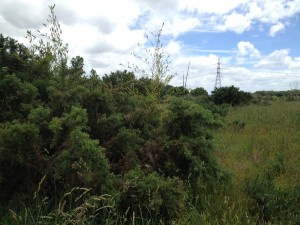
Where the Papakura Army Camp once provided economic spin-offs for the region’s economy, now stands a padlocked gate adorned with the obligatory trespass sign.
Papakura East has suffered from some of the region’s most awful homicides, Ardmore has become the dumping ground for the bodies of some of the most disturbing killings. Streets like Dominion Road, Settlement Road, Bates Street, Smiths Ave remain places where many, when tensions rise, accept the assistance of established gangs rather than seek recourse via the authorities.
All of this is not solely National’s fault, but National’s Judith Collins appears bereft of ideas or solutions at this level, in her own electorate.
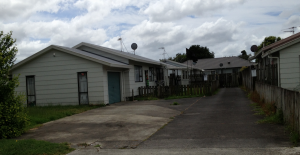
But like with all science, where a political vacuum occurs, something will fill it. The question is who will oblige and with what.
Will Labour give National a taste of its own medicine?
In Conclusion:
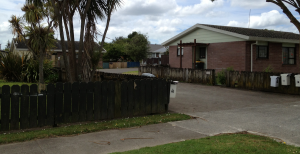
Labour needs to deliver a longterm strategy out here, right across the Great South Auckland Basin, inter-network its reach, or become as estranged from the Treasury Benches as these people are to politics.
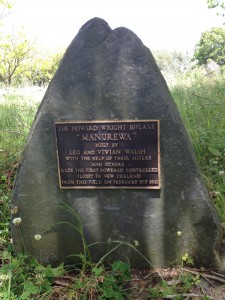
National’s Vice Strategy has been effective.
It can be reversed.
But to create a big swing for Labour in 2014, it needs a strategic reexamination of its purpose out here. And it needs to implement a change of tack, with haste.
And if Labour’s top-brass read this piece to its conclusion, my message here is that this kind of challenge cannot be orchestrated solely by the local LECs and the dedicated few like Jill Ovens and Len Richards – people who have dedicated so much for so long. They need help to create the Labour movement in these parts and need strategic action and Party List commitment from Labour’s HQ.
Lest we forget.
- References:
TheDailyBlog Photo-Essay: Time And Tide
Electoral Commission Proposed Electorate Boundaries
Electoral Commission Have Your Say – Anyone can make an objection to the proposed electorate names and boundaries.
Objections to the proposed electorate names and boundaries can be made online or in writing to the Representation Commission. Objections close at 10am, Monday 23 December 2013. Your name and a summary of your objection will be published online and available to view in hard copy from Tuesday 14 January 2014. (Electoral Commission.)
Electoral Commission Key Dates For Electorate Boundary Review

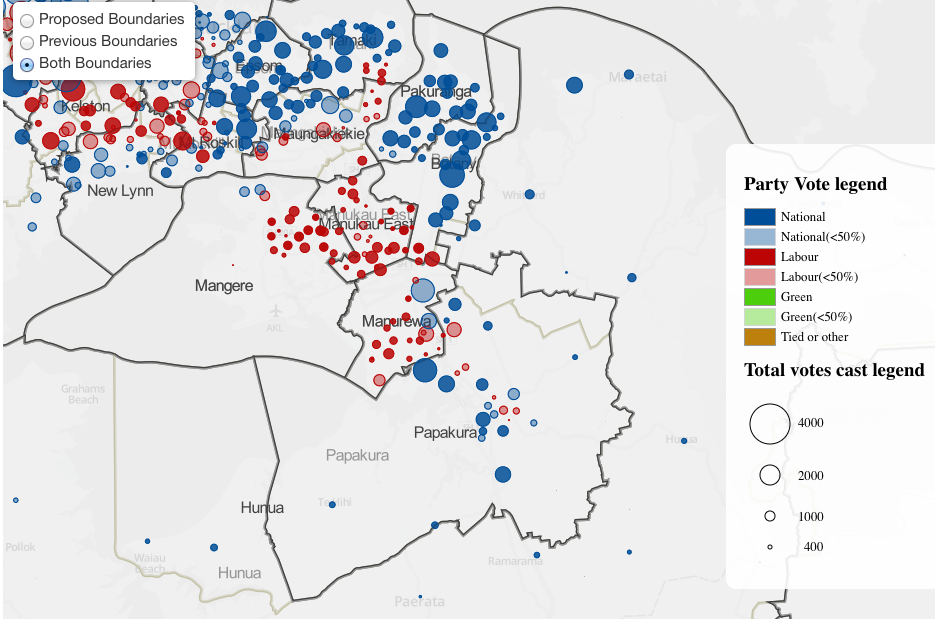
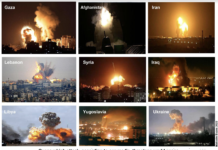



Evocatively written Selwyn. This is why The Daily Blog must go on, despite the huff and puff between other blogs and leader Bomber, the diversity of good and relevant writers that live what they post about is truly impressive at TDB.
Best thing on the political and economic guts of South Auckland Ive read for years. Can’t wait for the rest. Cheers.
THese things stand out for me:
south Auckland with a small ‘s’, is this saying something about it’s not really that important.
centre left – that’s a real ‘standing on the fence’ position. Southside needs staunch left wing advocates, not half pie candidates that haven’t got the guts to say where they really stand. is centre left meant to be inoffensive?
the Southside you reminisce on has changed. what was a series of semi rural towns are now brown and urban. ‘centre-left’ doesn’t really speak to their/our needs’
Using the small ‘s’ in south Auckland isn’t suggesting it is unimportant. To the contrary, it is a statement I use to show how officially the region is not designated as an entity in its own right. Actually, I am glad that you picked up the subtlety. Cheers.
Selwyn, I appreciate your good analysis, your insight, your reflections on times back then, and what has changed since. Of course South Auckland voters will be very important in the election 2014.
But to be honest, there have been changes all over the place, also in other electorates and parts of Auckland, same as in some other cities and also regions.
Ponsonby and Grey Lynn are today very different to 20 or 30 years ago, so are some West Auckland electorates. There are suburbs like Botany now, that not so long ago did not even exist.
Due to the housing market with sky high prices in much of Central Auckland, many middle class people, of whatever ethnic background or professions, have also moved to suburban areas where housing is more affordable, changing the population make-up and voting behaviour.
Is it not so that these days old party allegiance is rather outdated? People do now tend to vote more for what policies may benefit them, no matter whether the policies are offered by National or Labour, or the Greens, New Zealand First, Mana or whatever.
Of course some will be driven due to their economic and social circumstances, quite naturally.
Would it not make more sense to go out and campaign on convincing, good policies, on a solid, robust, smart and promising program, rather than spend too much time analysing and speculating on what suburban electorate down South may tend to vote for Labour or not?
Labour can be inclusive and reach out to the wider population, the poor, and the middle class, and even include beneficiaries, if they only want it, and do it well and convincingly. Offering all a chance and fair treatment, by bringing the whole country ahead, but not catering for the elite top percentages, not giving in to certain strong lobby groups that just happen to own a lot and have a lot of cash to spend.
Such a smart program will even be able to sway some electorates in rural areas.
These days the Nats have their South Auckland Pasifika and Maori candidates, same in other places, they have their Chinese and Indian members standing, who can appeal to migrant groups. Hence they will be a challenge – even in traditional Labour seats.
The effort must be in hammering out and presenting a superb program, and by delivering the best campaign that can be run, and Labour will have it in their pocket, likely with co-operating Greens. They did well in Christchurch East by addressing the very core issues people there are concerned with and by a staunch concerted campaign effort.
Cunliffe, Robertson, Jones and all candidates will have to get out of their offices, do the halls, the market places, hold meetings, speak, discuss, and front to the media also, and it can be done, no sweat.
The advantage is on the opposition parties’ sides, as the government has achieved stuff all, really, only 3 per cent growth due mainly to the Christchurch rebuild (rebuilding what was destroyed lifts GDP!) and more dairy powder exports to China. That is shockingly poor economic performance.
Take that out, and the country has actually rather moved backwards since 2008. Shearer could not ever have made this clear enough to the voting public, but Cunliffe and Co can, and so it will be a winner in 2014!
All else is stuff from bygone eras, I am afraid.
Marc, of course times have changed and bygone eras are located in the past. The relevance it has to today’s experience, political or otherwise, is as a comparable measure of how much change has occurred, and, in part, to offer up a perspective of where things are likely to trend. That is why there was the historical reference points in the piece. Believe me they were not included for the purpose of a mindless wandering into the good ole days or to hang out the dirty laundry of my early life. Pffft.
The realities remain, and can be referenced from contemporary electorate and party vote results, that the proportion of voters from the south Auckland basin that turn out to vote are one of three factors that will determine what party leads the next government. We will explore the other two factors that are relevant to the 2014 election over the next few weeks.
The historical observations were necessary to document in this piece so as to show why and how National is working its strategy to minimise the impact a larger south Auckland turn out would have on the election result. If you were in their shoes, you would do the same.
The other message this piece puts forward is that there are thousands of people in the south Auckland basin who, due to electorate boundaries, find themselves without political representation and it follows find themselves estranged from political influence or recourse. That’s why sectors within the Papakura electorate were used to illustrate this fact. Why this was raised was to drive home the opportunity that exists for Labour and other parties to pick up the challenge to connect to those estranged voters even should they live within a safe National seat.
What you have laid out in your comment is fundamentally true. If Labour and the Greens display solution based policies that go a long way toward assisting the nation’s peoples to overcome the challenges rising up before them, then the election will be theirs to win. My premise is that south Aucklanders are significant in this debate and should be referenced as such and connected with too so as to ensure policy that develops can be guaranteed to work… policy that will make a real difference to the people and the region. History, as sited, shows that the longstanding relationship between Labour and south Aucklanders should demand that this be so. Cheers to that.
I’m sorry that the purpose of the piece was not as obvious as was my intention.
Selwyn –
I take your points! Yes, Labour, and perhaps also in the odd electorate even the Greens (where they may have a realistic chance), need to make sure they have the right and convincing, and capable candidates, to stand on the ground there. They must challenge National, or take on the challenge by the Nats, and now also of course the “chem trailing” Conservatives of Colin Craig. Hence my emphasis on a solid, strong campaign, as Christchurch East has shown. It will work.
They must focus on what matters for the people. People need to be told the alternative option in a convincing manner. National was in government nearly 6 years, and any good candidate can take them to pieces, listing all their promises, their flip flops, their agendas and many failings.
I will look forward to your other contributions in the coming weeks, as your posts are very insightful and informative.
Comments are closed.